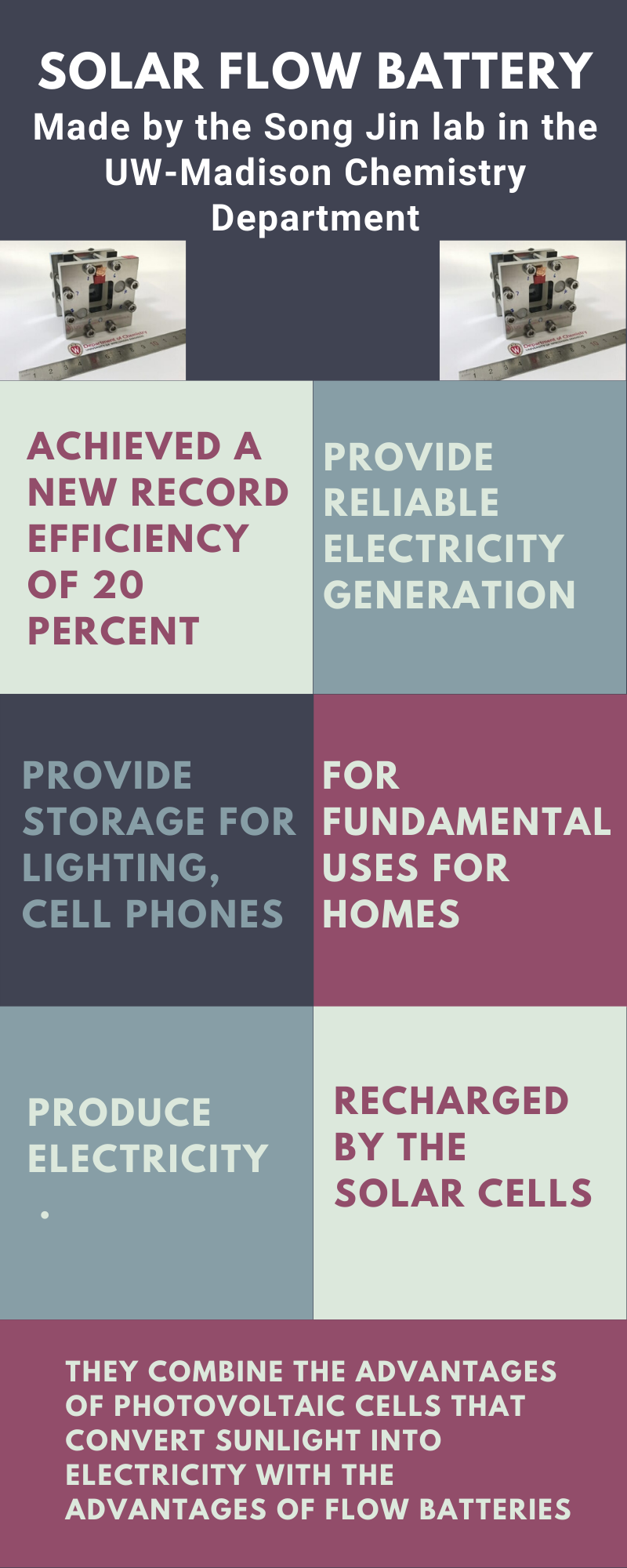MADISON, Wis.: The new device is made of silicon solar cells combined with advanced solar materials integrated with optimally designed chemical components, are efficient than the previous record holder for solar flow batteries, also developed by the Jin lab in collaboration with researchers from the University of New South Wales and the University of Sydney in Australia, Utah State University, King Abdullah University of Science and Technology in Saudi Arabia and the City University of Hong Kong.
The researchers published their work on July 13 in the journal Nature Materials.

Flow batteries could be a good substitute for lead-acid or lithium-ion batteries for electricity storage. It could be less expensive at a larger scale and are an ideal storage choice for merging with solar cells. This is possible as it increases the efficiency of traditional silicon solar cells by capturing more energy from the sun.
Jin Lab has been working for years studying and improving integrated solar flow battery systems. This new breed of highly efficient perovskite-silicon solar cells is on its way to commercialization. Yet silicon remains key for making a stable device that can withstand the chemicals in a flow battery.
"Our motivation for the design of the solar cell was to combine these two materials together so we have both high efficiency and good stability," says Li.
To predict the ideal voltage that the flow batteries should run at, Li developed a new theoretical modeling method. The modeling allowed him to select a pair of chemicals in the flow battery that would operate at the ideal voltage based on the characteristics of the solar cell, maximizing efficiency. The chemicals are organic compounds, not expensive metals as in traditional flow batteries, and are dissolved in a benign water solution of table salt rather than strong acids.
Utah State University chemistry professor T. Leo Liu and his graduate students provided the key matching chemicals. Thanks to a good match between the solar cell and the flow battery, the winning device maintained a high efficiency over hundreds of hours and hundreds of charge-discharge cycles while retaining most of its capacity. That lifespan was several times longer than earlier devices. Overall, the new system's long life and 20 percent efficiency made it the best solar flow battery device yet.
"That's 20 percent efficiency any time you like," says Jin. "You can use the solar electricity right away during the day and get 20 percent, or you can use it in the evening from storage and get 20 percent."
There's still plenty of research to be done before such devices would make practical renewable-energy solutions. Increasing the size and scale of the current small gadgets in the research lab is one challenge. And even though the researchers created a relatively long-lasting battery, real-world applications demand still greater robustness. The Jin lab is continuing to develop even more efficient solar flow batteries while also experimenting with practical trade-offs to reduce the cost of the devices.
That research could one day yield a new way to harvest, store, and use the sun's energy.
"Our eventual goal, if we can make this practical, is to target solar home systems," says Li. "People who don't have electrical grid access could use this device to have reliable electricity."
Also Read:New BlackRock Android malware can steal User Data from 337 Apps



